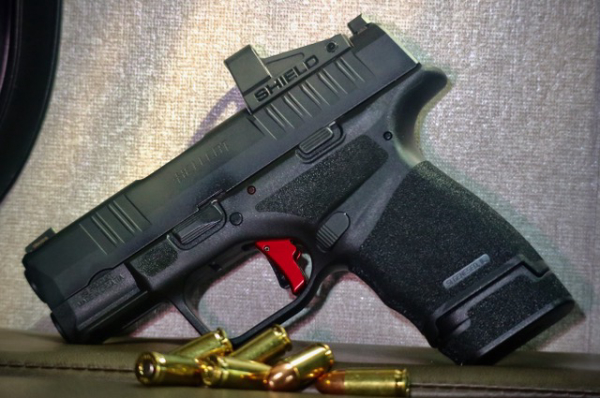The name Hellcat conjures up a pair of distinct, and unrelated, images. The first, Mary Todd Lincoln. The wife of President Abraham Lincoln was small in stature, but big in temper. She apparently earned the sobriquet “Hellcat" a century before Secret Service agents routinely hung monickers on their boss and his family.
The second was equally fierce, although neither bi-polar nor schizophrenic. The Grumann F6 Hellcat is one of the venerable fighter planes of World War II that I’ve dreamt of flying my entire life. This Hellcat played a key role in Pacific theatre combat, replacing the Vought F4U Corsair and proving a match for Japan’s Mitsubishi A6M Zero. It was truly a long-lived warhorse. The first was introduced into combat in 1943. The last active duty fighter was retired from the Uruguayan Navy in 1960.
Today, there’s a third Hellcat in my memory bank. This one’s more controllable than Mrs. Lincoln and far more affordable, although no less purpose-built than the Grumann product.
By now, you’ve probably figured out I’m speaking of Springfield Armory’s Hellcat, their latest entrant in the “micro-pistol sweepstakes”.
There have already been dozens of reviews, talking about its magazine capacity (11+1 or 13+1, the highest in the category), Adaptive Grip Texture, and high visibility sights, or its availability in an optics-ready OSP configuration.
They’ve all been correct, it is a high-capacity, high-visibility, weapon of some note.
With or without the optional optic, it’s a lot of handgun in a very small package.
Others have already put the diminutive Hellcat through its paces, including a 20,000 round torture test. There’s no doubt that the pistol’s a great option for anyone looking for a small, defensive handgun.
Currently, I’m alternating between a variety of micro-compacts, including the Hellcat. Being of the age where front and rear sights seldom play well together, they each wear red dot sights.
Haven’t spent sufficient range time since the pandemic to tell you I have a clear preference. They’re all good pistols. I don’t have enough disposable personal ammunition for sufficient head-to-head testing to say one’s “more” accurate, user friendly, ergonomic or whatever. To get to a range where I would have that amount of time would require an overnight trip.
Today, my advice to everyone is to shoot enough to maintain proficiency, then save the rest. Especially in those quick-to-disappear calibers. All the micros I’m toting around are 9mms, one of those quick to get scarce calibers.
Even with limited testing, I can tell you this about my Hellcat with the Shield RMSc optic: it’s definitely more comfortable to carry than a full-sized fighting pistol. It’s equally comforting because of its caliber, capacity, and accuracy. The combination of ergonomics and optics make it more than capable in the up-close-and-personal distances where most confrontations occur.
The “other” micro-compacts are equally qualified. It’s a great time to be a shooter.
Ultimately, the argument of one pistol over another is like arguing flavors of ice cream.
No one argues their love of ice cream, that’s a given.
It’s the flavor (fit/brand) preference that makes one “best”. If you’ve found one that resonates with you, it’s your favorite. Don’t see the need to try others? That’s cool, too. My work dictates I try as many “flavors” as possible. Fortunately, I love pistols almost as much as I love ice cream.
Today, we’re adding a big flavor “sprinkle” to the Hellcat: an Apex Tactical Action Enhancement Trigger (www.apextactical.com).
The ice cream analogy breaks down here, because the Apex trigger’s doesn’t just add flavor (although the red trigger really looks good), it’s a performance improvement. Like the difference between ice cream and custard.
The Hellcat already has a good trigger. Adding the Apex trigger takes the gun up yet another level.

With the Apex kit installed, already-solid Hellcat groups tighten. Probably because you’re able to run the trigger more consistently. We all know that being smooth and consistent is the secret to being fast and accurate. Exactly what you’re looking for in a defensive pistol.
The Apex kit dropped the trigger pull down to what they say is “about” 5.5 pounds. After a break-in period, Apex says that will drop to 5.
I have far lighter pistol triggers. The Apex in my S&W M&P competition pistol is significantly -and intentionally- lighter. But it’s a competition pistol.
With my adrenaline dumped and facing a “problem” a 2.5-3.0 pound trigger isn’t safe. That’s too-light for a gross motor skills situation.
Like any Apex trigger I’ve ever tried, this one smooths the Hellcat’s overall action, reduces trigger travel and reset, and delivers a clean, crisp trigger break. Unlike other after-market installations, however, this one directly replaces factory components. There’s absolutely no additional fitting needed.
Takedown the Hellcat and remove the requisite pins and parts. Reverse the process, and viola, your Hellcat’s improved- without changing factory safety values.
If you’re not technical (like me), you can do this - by yourself. An Apex video walks you through the entire process.
Apex’s Scott Folk makes the process clear, simple and amusing.
But don’t think you won’t be scrolling backwards to review at times. Simple to a gunsmith/engineer isn’t always simple for the rest of us. But you can do it.
Here’s a hint: remember the parts are metal not glass. They’re more than sturdy enough to be fumbled around and still work.
Apex starts taking orders for these ultra-simply installed replacement units today and expects to start shipping kits by August 24.
If you like the Hellcat and want to take that feeling up another notch, it’s an expenditure worth making.
And with several colors available at $79.95-$89.95, you’ll be able to add color “sprinkles” to make your Hellcat distinctly yours, and still have some money left over for ammo.
—Jim Shepherd